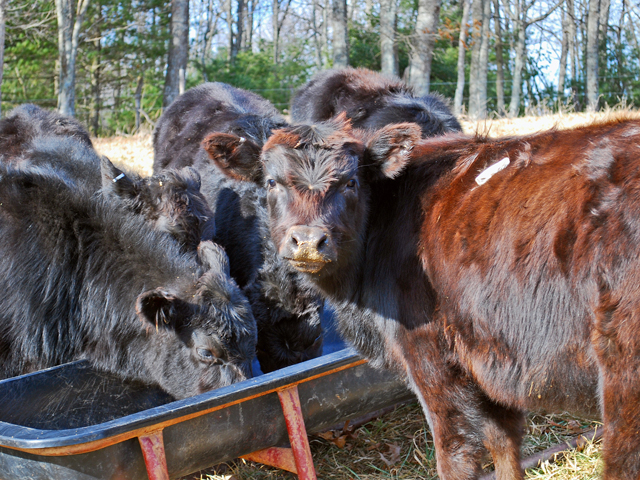Ranch-Direct Beef Sales
Consumers Still Want Beef Direct From the Farm
A lot of consumers learned through the worst of the pandemic that while they might not always be able to count on their local grocery store for the essentials, a direct-to-the-farm connection was a coveted alternative. For many cattle producers, those sales opportunities continue to grow.
At the annual Stiles Farm Field Day, sponsored by Texas A&M AgriLife Extension Service, more than 100 producers were on hand to learn how they could tap into this trend, maximizing per-pound sales prices and cutting out some of that "middle-man fat."
Jason Cleere, Extension beef specialist for Texas A&M, told attendees, "Whether it's all-natural, organic or grain-fed beef coming off the ranch, for consumers who can actually see where and who they are getting their beef product from carries a lot of weight and trust. Consumers are wanting beef with a story to it."
For producers who want to carry some of their herd to the end product, it means additional feed to get those carcass weights to 1,300 or 1,400 pounds. In today's market, Cleere estimated, adding an additional 3 pounds of gain a day would require buying feed at $360 per ton, with a cost of gain at around $1.20 to $1.30 per day. That's more than a typical feedyard pays to put pounds on, he noted. Cleere estimated a typical feedyard's cost of gain at around 90 cents per day.
P[L1] D[0x0] M[300x250] OOP[F] ADUNIT[] T[]
Put too much money into reaching that end product, whether it's hamburger or steak, and Cleere says producers can price themselves out of the direct-to-consumer market.
Timing is another consideration, with Cleere recommending staggering the animals that will be fed out, so they don't all reach slaughter weights and have to be sold at one time. There may also be unexpected challenges with holding cattle long enough to put on those extra pounds, in terms of health issues, said Dan Hale, associate director for agriculture and natural resources at Texas A&M.
Calves that are finished in confinement, for example, may have problems with grain bloat and acidosis if they receive a ration high in corn without adequate roughage. Calves should always have a transition period of around three weeks between forages and moving to a finishing grain diet, reports Shane Gadberry, associate professor at the University of Arkansas. Gadberry adds producers finishing calves on grass also must watch for bloat, especially where pastures are a high percentage of legumes, or in some cases toxic weeds.
In addition, many producers selling consumer-direct will try to avoid use of antibiotics based on buyer preference. This may become more difficult as animals age out and put on weight, opening the door to issues like foot rot, respiratory illnesses, etc.
Lastly, and perhaps most importantly, it's key for producers who want to sell direct to have a custom slaughter service in mind, and to know availability of services, along with cost. During the height of the pandemic, many custom processors were backed up for months, and in some areas, this space shortage continues to be an issue. Some regions have begun to address this, and producers are beginning to see more space planned for custom processing.
DTN Staff Reporter Russ Quinn noted in a recent story, "Small Meat Locker Business Expands," that in parts of the Midwest, increased demand for ranch-direct meat has continued to create business opportunities: https://www.dtnpf.com/….
Under its Rural Development arm, USDA has information available to assist small and very small meat processors in building these types of businesses. This includes a Value-Added Producer Grants Program, a Rural Microentrepreneur Assistance Program, a Rural Economic Development Loan and Grant Program, as well as various loan guarantee programs. For more information or to apply, go to https://www.rd.usda.gov/….
Victoria Myers can be reached at vicki.myers@dtn.com
Follow her on Twitter @myersPF
(c) Copyright 2021 DTN, LLC. All rights reserved.





